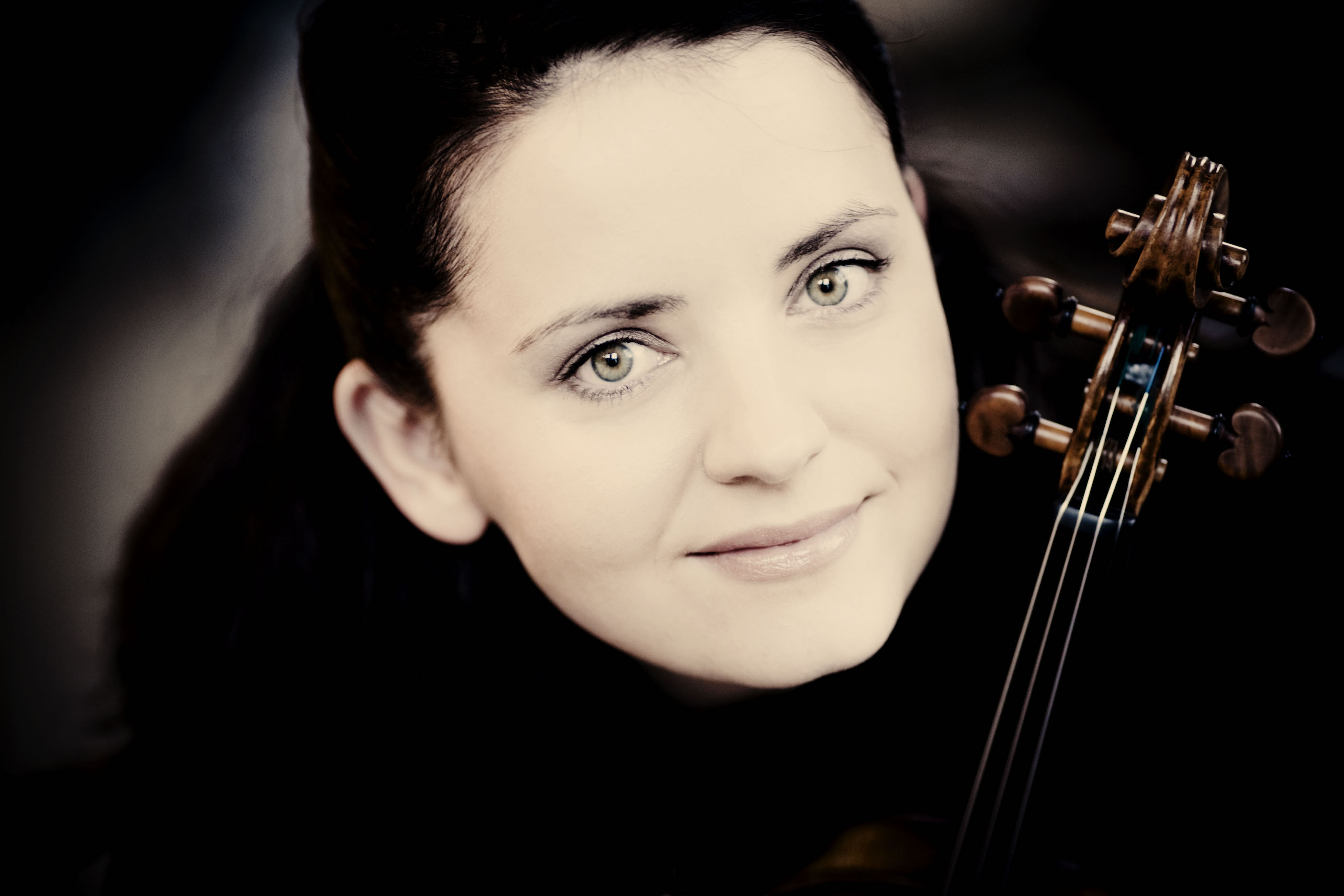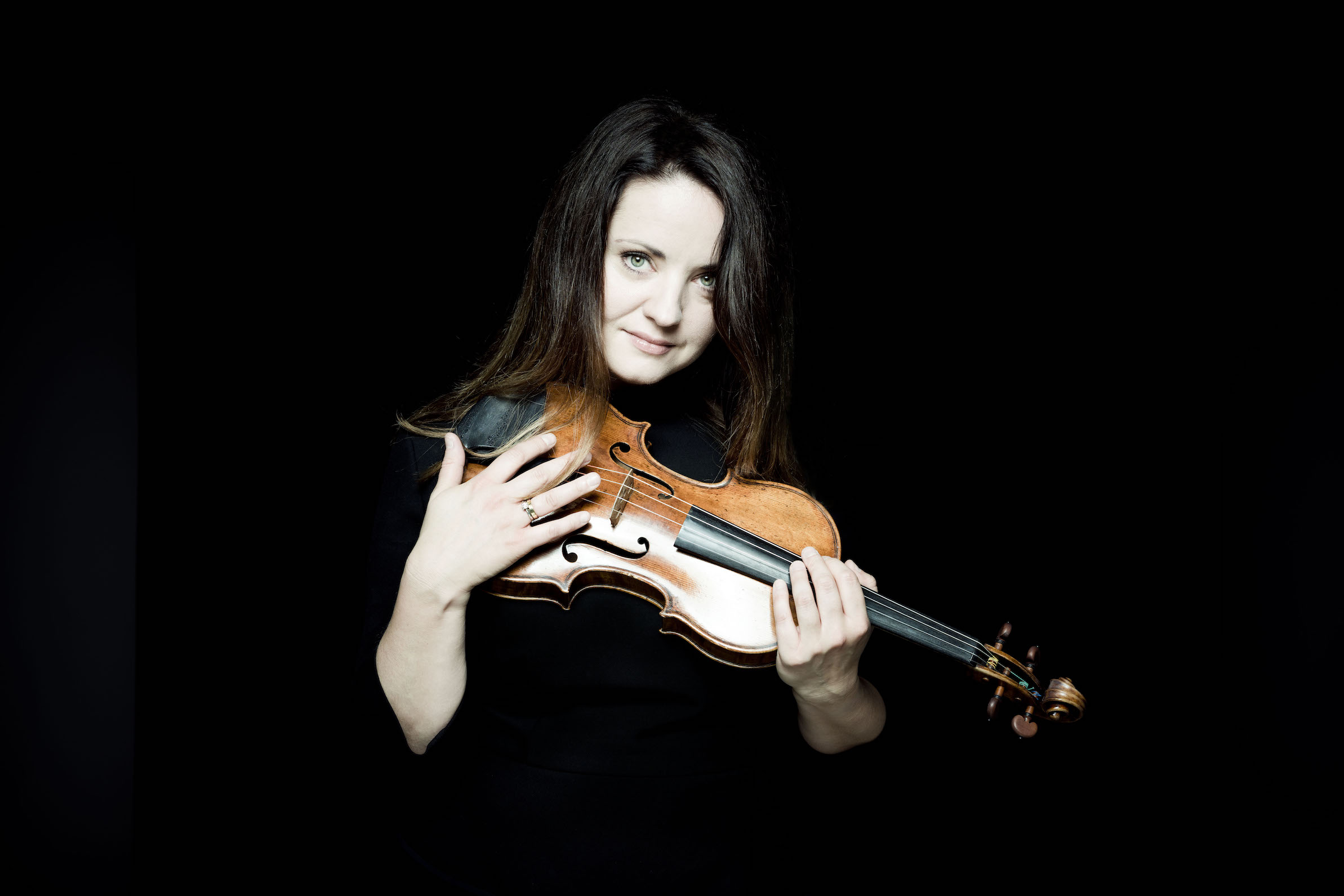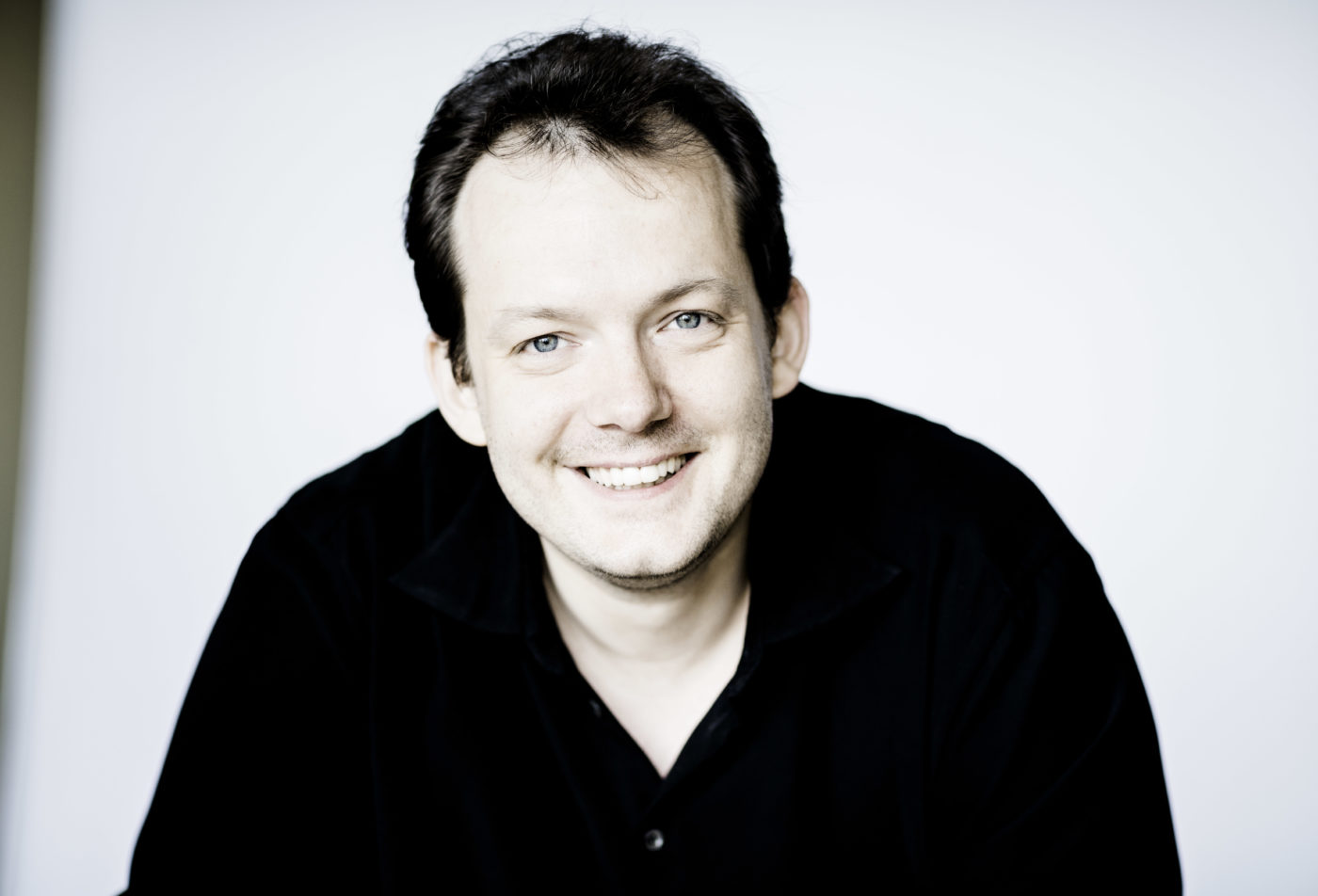Baiba Skride, Andris Nelsons / Boston Symphony Orchestra
Bernstein / Shostakovich
KKL, Lucerne Festival, 2018-09-12

2018-09-27 — Original posting
Kopfig-Jazziges und ein russisches Meisterwerk: Baiba Skride, Andris Nelsonsund das BSO in Luzern — Zusammenfassung
Andris Nelsons (gebürtiger Lette) präsentierte mit den Bostonern eine hinreißende Vierte von Schostakowitsch. Als Kontrast vorab interpretierte die Lettische Geigerin Baiba Skride die selten gespielte Serenade von Bernstein—ein rhythmisch und spieltechnisch intrikates Violinkonzert!
Table of Contents
Introduction
This year’s Lucerne Festival featured two concerts by the Boston Symphony Orchestra, an orchestra that one can rarely hear in Switzerland, if not even in Europe. The ensemble goes back to 1881 and now is one of the “Big Five” orchestras in the US. In Lucerne, the orchestra worked under the baton of its Latvian chief conductor, Andris Nelsons (*1978, see also Wikipedia). Nelsons grew up in Riga, Latvia, into a family of musicians. He then studied conducting in Saint-Petersburg, also taking master classes, with artists such as Neeme Järvi (*1937).
It was the encounter with Mariss Jansons (1943 – 2019) which started Nelsons’ career. 2006 – 2009, he became chief conductor of the Nordwestdeutsche Philharmonie of Herford, Germany, 2008 – 2015, he was principal conductor and music director with the City of Birmingham Symphony Orchestra (CBSO). Starting 2015, Andris Nelsons became music director with the Boston Symphony Orchestra, and on top of that, this year, he also accepted the position of Gewandhauskapellmeister of the Leipzig Gewandhaus Orchestra.
Program
Andris Nelsons’ program for this performance consisted of two works:
- Bernstein: Serenade after Plato’s “Symposion” (1954)
(Intermission) - Shostakovich: Symphony No.4 in C minor, op.43 (1936)
The composition of the two works is just 18 years apart. Yet they are entirely different in their character.
Soloist
Bernstein’s serenade really is a highly demanding violin concerto, see below. Soloist in this first part of the concert was the Latvian violinist Baiba Skride (*1981, see also Wikipedia). Skride grew up in a musical family and did her first studies in Riga, later at the Conservatory of Music and Theatre in Rostock. Since her career took off with a first prize at the Queen Elisabeth Violin Contest in 2001, she is pursuing a successful career as concert violinist and recording artist. Baiba Skride is now playing on her third violin by Antonio Stradivari (1644 – 1737). The instrument in this concert was the 1724 (?) instrument “Yfrah Neaman”, named after its previous owner, the Libanese violinist Yfrah Neaman (1923 – 2003). For Baiba Skride’s previous instruments see Wikipedia.
Setting, Orchestra
As this was my first encounter with the orchestra, I was curious about how they relate to European orchestras, such as differences in appearance, sound, and the like. I was interested to see whether and how much the ensemble from the New England part of the States would still bear signs of European heritage. After all, New England is sometimes referred to as the “most European” part of the United States. On the other hand, the ensemble comes from the place of the Boston Tea Party, back in 1773!
Appearance upon Entering the Podium …
I don’t think this was a deliberate differentiation from European orchestras, but I noted that the orchestra entered the stage over the duration of half an hour, anything but in an organized fashion. This is quite a contrast to typical European Orchestras at Festivals. Once seated, the musicians started fiddling, chatting. This only ended when the concertmaster entered the stage, asking the musicians to tune their instruments. If there is insufficient room for preparation & rehearsing, local orchestras may do casual rehearsing on stage as well. But then, the musicians are asked to leave the stage, for a (more or less, depending on the local tradition) orderly, organized appearance.
… and During the Performance
That somewhat disorderly impression changed completely during the performance. As soon as the conductor was present, the orchestra was very disciplined. It functioned as smoothly as a perfectly lubricated engine. There were no visible signs of internal hierarchy, let alone of democratic structures. Even without acting like a dictator, the conductor firmly held the controls in his hands. Even the function of the concertmaster appeared to be of minor importance. Everybody in the orchestra seemed to fulfill their function with utmost seriousness and professionalism.
The orchestra used a modern arrangement with both violin voices at the left, followed by violas, cellos on the right, double basses behind the cellos.
Finally…
My wife and I held seats 17 and 18 in row 20, parquet seating (row 4 of the rear block, center-left).
Bernstein: Serenade after Plato’s “Symposion”
Leonard Bernstein (1918 – 1990) wrote his Serenade for solo violin, harp, percussion and strings after Plato‘s “Symposion“ in 1954. I have previously written about a performance of the Serenade in Zurich earlier this year, on 2018-01-30. Let me just quote the central part of the description from that posting:
The composition really is a highly virtuosic violin concerto. It is inspired by “Symposion” (Symposium), a key work by the ancient Greek philosopher Plato (around 428 – 347 B.C.). Bernstein’s Serenade is a series of five movements / dialogs about the topic of love, featuring seven prominent philosophers / poets of (before) Platon’s time:
- Phaedrus: Pausanias (Lento — Allegro marcato)
- Aristophanes (Allegretto)
- Eryximachus, the Doctor (Presto)
- Agathon (Adagio)
- Socrates: Alcibiades (Molto tenuto — Adagio — Allegro molto vivace)
Challenges
Bernstein takes up elements from Jazz (quite heavily, in the rhythm, obviously), but also from Jewish singing and other styles of the mid-20th century. The Serenade really is an intricate violin concerto, with serious challenges not just in virtuosic speed, double-stop playing, flageolet and straight very high pitch playing, left hand pizzicato (occasionally), but primarily rhythmically, and even more so in intonation. In the composition of the serenade, Bernstein relied upon the help of violinist Isaac Stern (1920 – 2001), who edited the solo part and did the fingering. This may explain the presence of many of the intricate / advanced features in the solo part.
The Performance
Bernstein’s “Serenade” isn’t heard very often in concert. The 100th birthday of the popular conductor, pianist and composer may well be the main reason why I’m now running into this work for the second time within less than 8 months. As a composition, the “Serenade” stands on a very high, intellectual pedestal. Without extensive preparation (in a matter which the vast majority of the audience isn’t familiar with), the philosophical / intellectual basis, the thoughts taken from Platon’s “Symposion“, are anything but obvious to the average listener.
On top of that, the piece is highly demanding in its frequent changes in meter / signature, and just as much in the solo part, some of which can hardly be performed with clean intonation under the conditions of a live concert.
The foundation for the “Serenade” is a complex intellectual construct. However, at the same time, as music, the piece is filled with topoi so typical of Bernstein. And it exhibits strong influences from Jazz, as well as from Jewish music. Listeners will easily recognize conspicuous, recurring melodic and rhythmic elements. However, the melodic components are usually rather short. Also, one will barely recognize much musical development in terms of conventional musical design language. It’s only thanks to the abundant diversity in musical inventions that the composition isn’t “used up” (i.e., turns into an earworm) within a single performance.
I. Phaedrus: Pausanias
Baiba Skride performed the “Serenade” by heart, and technically, especially rhythmically, very firm. She started the initial Lento segment with a “very small tone”, mellow, gentle. She picked up volume as soon as the orchestra joined in. There are really beautiful moments in the solo cantilena, which Skride played with limited (though somewhat nervous) vibrato.
Overall, I found the bright sound of her Stradivari ideal for this music. Even in the highest registers, and at the softest levels, the instrument kept projecting well. Of course, the Spaltklang (“split sound”, i.e., the sound scape consisting of components that don’t mix in the listener’s impression) that is inherent to this composition provided essential support in this. At the same time, this very feature also isolated the solo part, making clean intonation particularly challenging. Indeed, not everything worked out perfectly. One example was the last part of the first, long (and extremely exposed) solo in this movement.
In the Allegro marcato segment, the orchestra part was full of momentum and drive, the musicians livened up in the rhythm of this music. The soloist’s intonation was better here, especially in the central dolce segments, Still, it obviously remained challenging. In motifs, Baiba Skride often retained some rhythmic freedom / flexibility, which made the music appear more fluent.
II. Aristophanes
Here, I noted the excellent coordination with the orchestra, across all the tempo changes and rubati. Also, the violin’s response and projection in the flageolet part was excellent. One should keep in mind that this venue is not a typical serenade setting!
III. Eryximachus, the Doctor
A highly virtuosic intermezzo, both on the part of the orchestra, as well as in the solo, rushing by, not mechanically like a sewing machine, but at its speed. It’s a ghastly affair, and fun to listen to, for sure!
IV. Agathon
Just like at the very beginning of the serenade, Baiba Skride approached the intimate, calm first part with soft, singing tone, entirely introverted, retained. The music only broadened towards the cadenza (appassionato, later largamente e rubato), thereafter returned to the most gentle, mellow tunes. Beautiful music, actually. However, I felt that some of the virtuosity in the piece is used up by the effort to keep the intonation clean.
V. Socrates: Alcibiades
The last movement often felt like a (joyful) “bath in a sea of dissonances”. The music is full of invention in motifs, but seems to lack melodic development. The solo started a long cantilena, followed by an imitation on the cello (slightly nervous, for my taste). Bernstein appears to refuse the harmonic resolution / relief into a cadence. For a long time, at least: the resolution only happens right at the transition to the Allegro molto vivace part. Here, both orchestra and soloist livened up again, in the jazzy rhythm, with countless rhythmic shifts, changes in meter, and sudden fff interjections by the orchestra. It’s enthralling music—Bernstein at his fullest, and the orchestra felt in its element, too!
Throughout the performance, Andris Nelsons and the Boston Symphony offered Baiba Skride an excellent, attentive and precise partnership in her challenging solo.
Intonation
I didn’t always feel at ease with the intonation, through most of the serenade. I started wondering whether this was caused by the orchestra playing in pure equal temperament tuning (typically with little harmonic tension), whereas I had the impression that Baiba Skride tended towards more flexible (somewhat diverging) intonation, e.g., by deliberately narrowing down lead intervals, likely also by playing pure (Pythagorean) intervals, such as thirds, fifths, sixths?
Rating: ★★★
Encore
Baiba Skride played a rapid, strongly rhythmic, virtuosic encore that I did not recognize. It remotely reminded me of the Toccata from “Pour le piano“, L.95 by Claude Debussy (1862 – 1918). This of course is a purely coincidental association, but at least, it describes the character of the piece.
Shostakovich: Symphony No.4 in C minor, op.43
Dmitri Shostakovich (1906 – 1975) wrote his Symphony No.4 in C minor, op.43 in the years 1935 and 1936. At that time, he was publicly denounced for his opera Lady Macbeth of Mtsensk. He was blamed for “formalism” in his opera. In the Stalin era, an accusation like this could have very severe consequences—the composer feared for his life. Due to these accusations, he withdrew the composition prior to the premiere in Leningrad, and consequently, the symphony only premiered in 1961, in Moscow.
The Wikipedia article states: “Shostakovich uses an immense orchestra in this work, requiring well over one hundred musicians. This, combined with the extreme technical and emotional demands placed on the performers, makes the Symphony No.4 among his least-performed scores, yet it ranks as one of his most important and personal works.” Indeed: it is such great music! I can only call it extreme arrogance of the Soviet Nomenclatura that it dared accusing artists for producing works that they (most notably the people in the assembly of the “Composer’s Union”) simply didn’t understand. Worse even: Shostakovich didn’t dare confronting the public with this symphony!
The work comes in three movements:
- Allegretto, poco moderato – Presto – Tempo I
- Moderato, con moto
- Largo – Allegro
The Performance
This symphony forms part of Andris Nelsons’ ongoing project of recording of all of Shostakovich’s symphonies. Most of these works (including No.4) he has already done. So, this symphony is a firm part of Nelsons’ repertoire, and he is very familiar with the composer and his symphonies.
I. Allegretto, poco moderato – Presto – Tempo I
Among the notable features in the performance by Andris Nelsons and the BSO are the sharp, clear contours in dynamics and rhythmic changes. The orchestra performed with transparency, precision and outstanding coordination. The brass section in particular was excellent, the string sound dense, often intense (even though it didn’t have the silky quality of the string sound in some European orchestras). The sheer size of the orchestra gave Nelsons the opportunity of an enormous dynamic palette, from the finest ppp up to an almost oppressive fff (and beyond). All this was under perfect control, in excellent balance.
The quality of the orchestra and its performance left very little to wish for, one really would have needed to watch out for imperfections. There were perhaps tiny incidents, such as the brass section being a (tiny) tad behind the percussion at the galloping climax, or a little, isolated mishap in the intonation with the flutes in the last movement. Nelsons’ ability to produce a wide spectrum in sound colors astounded just as much as his firmness in rhythm and tempo choices: a compelling performance.
II. Moderato, con moto
In my notes from the concert, I described the music and the performance as reflecting “abstraction, playfulness, loose, relaxed serenity” in the first part of this movement. Other points included the excellent sound of the violas, and the smooth, seamless transition from these to the second violins, later the smooth tone of the highly virtuosic clarinet solo. I also found very remarkable how Nelsons was able to build up and maintain suspense, to keep, even increase the tension towards the end, in preparation for the final movement.
III. Largo – Allegro
A fascinating, long movement, beginning with the timpani marking a slow heartbeat, later taken up by the low woodwinds (and then also the low strings. When the woodwind instruments enter one by one, this strongly reminded me of the second movement, “Presentando le coppie” in the Concerto for Orchestra, Sz.116 / BB 123, which Béla Bartók (1881 – 1945) composed seven years later (makes me wonder whether this is a coincidence?). It’s music full of suspense, and the performance convinced with precision, consequent shaping of large-scale structural & dynamic arches. The music maintained the tension above the constant, metronome-like heartbeat. Then, of course, the impressive, rolling thunder of the big drum that led up to a broad climax.
I was amazed how well Nelsons managed never to drop the tension even a tiny bit, despite the monotonous base pulse over long stretches of the composition, allowing for only gradual changes in the tempo. This lasted up to the final, long decrescendo. Too bad that exactly in that final silence, when everybody in the audience seemed to hold their breath, somebody in the audience did / could not hold back a nasty cough. I guess this is hard to avoid, and part of a live concert experience. Still, regrettably, it let the final “post-performance suspense” collapse momentarily. However, it could not affect the impression of a really impressive performance. What a great symphony this is!
Rating: ★★★★½
Addendum
For this concert I have also written a (shorter) review in German for Bachtrack.com. This posting is not a translation of the Bachtrack review, the rights of which remain with Bachtrack.com. I created the German review using a subset of the notes taken during this concert. I wanted to enable my non-German speaking readers to read about my concert experience as well. Therefore, I have taken my original notes as a loose basis for this separate posting. I’m including additional material that is not present in the Bachtrack review.




